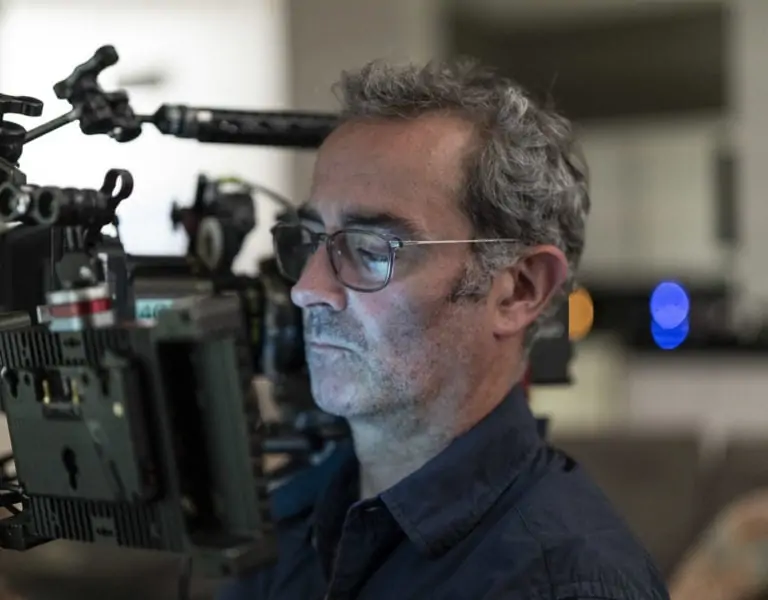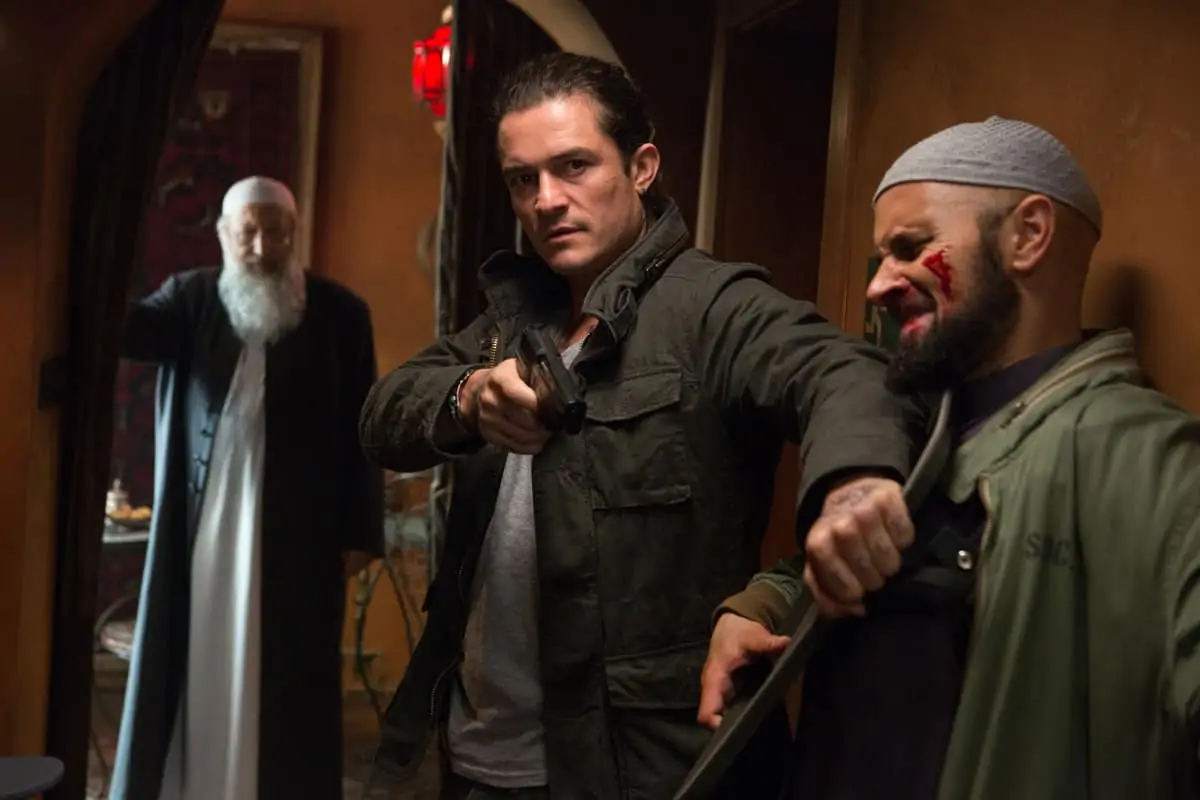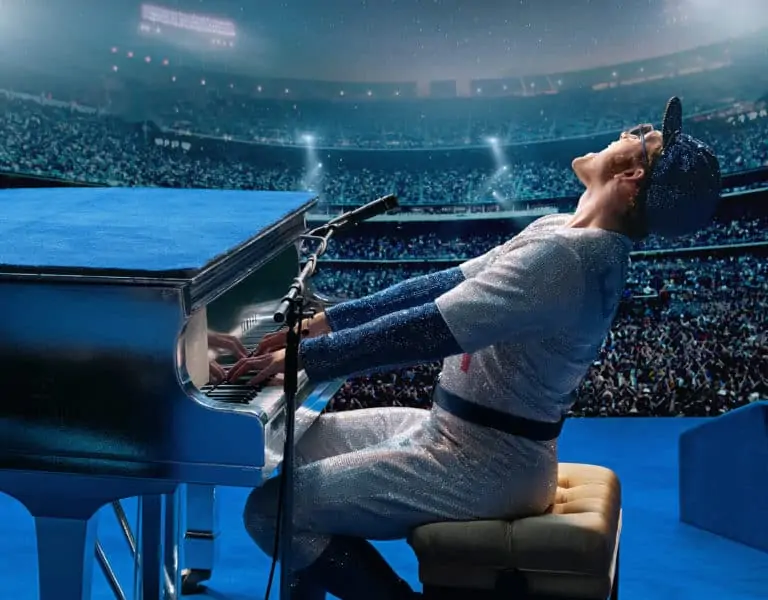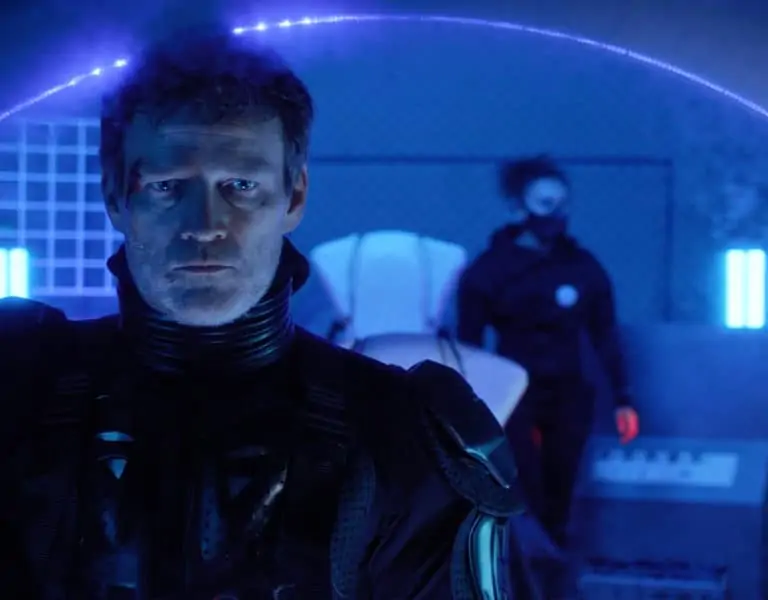CREATING THE MAGIC
Magizoologist Newt Scamander (Eddie Redmayne) returns in the latest of the Fantastic Beasts movies, the prequel-saga of the wizarding world in Britain, America, and beyond before Harry Potter’s Hogwarts career. The Secrets of Dumbledore, co-written by JK Rowling and Steve Kloves, moves the story world into 1930s Europe and Weimar Berlin with Potter veteran David Yates at the helm in concert with George Richmond BSC (Sunshine on Leith, Free Guy).
Richmond was the last head of department to be hired (the script having gone through various delays including the departure of Johnny Depp and arrival of Mads Mikkelsen as evil wizard Gellert Grindelwald), so by the time he came aboard the film’s art department and schedule was pretty advanced.
“In speaking to David, it was clear he wanted a gear change to the way the film looked and felt in order to move the story forward, but I was lucky in having this amazing Look Book which I seized on for inspiration,” says Richmond.
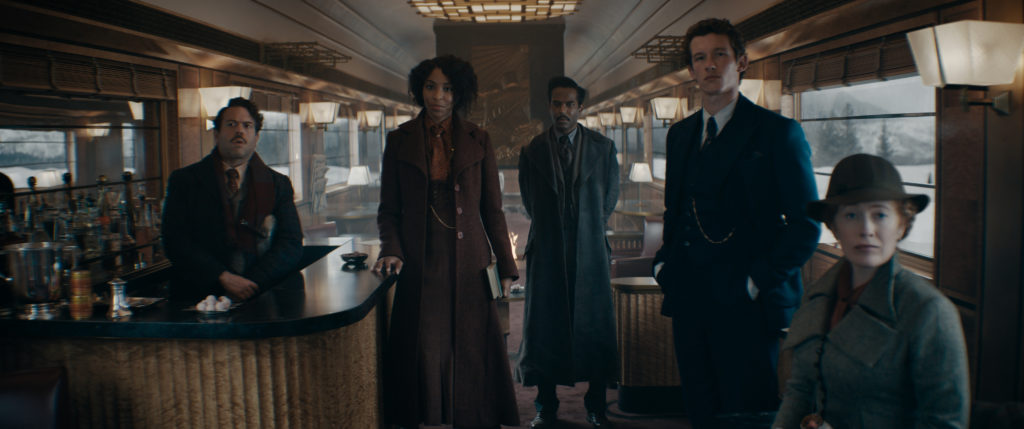
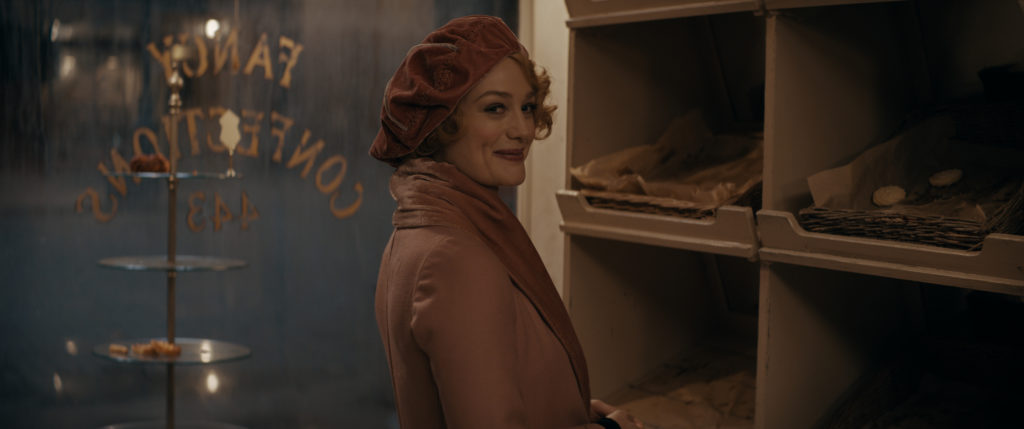
This was the work of concept artists Jack Dudman, Eva Kuntz, and Dermot Power whose “wonderful illustrations” provided the starting blocks for how the film could look alongside the production design team, Neil Lamont and Stuart Craig.
The next step was camera test, a process Richmond always finds useful in helping production departments speak from the same hymn sheet. For Dumbledore, he arranged two tests, one for camera and LUT against sections of set with costumed stand ins and another exploring looks against costume, hair and make-up.
“In both cases we put in varied lighting and then faded different looks in and out of the scene in order to really assess things. In its simplest form you’d have a side light, front and back light, low light, a 3/4 back light, with and without smoke. I try to push things to find out where it would break the colour or the beauty of the contrast or how much light destroys the blacks.
“You’d look at silhouettes and all the possible shapes for various characters, so you have a good idea going into principal photography of how to use them in the best way possible.”
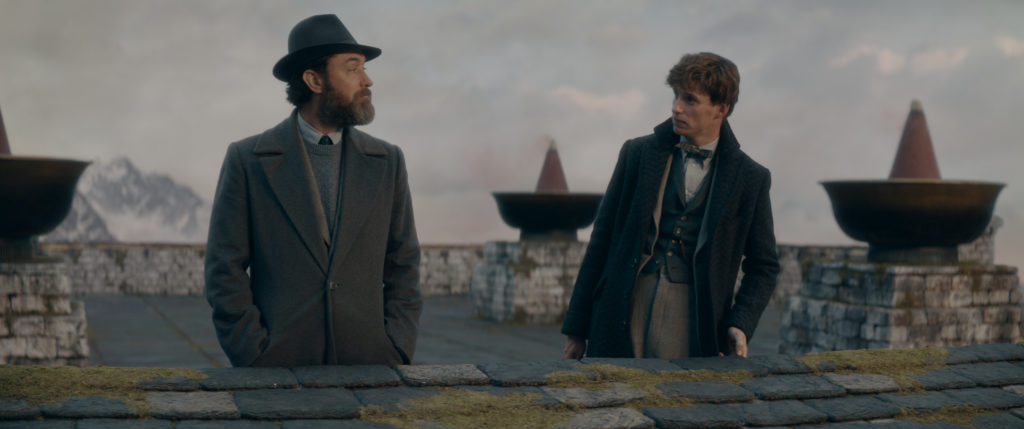
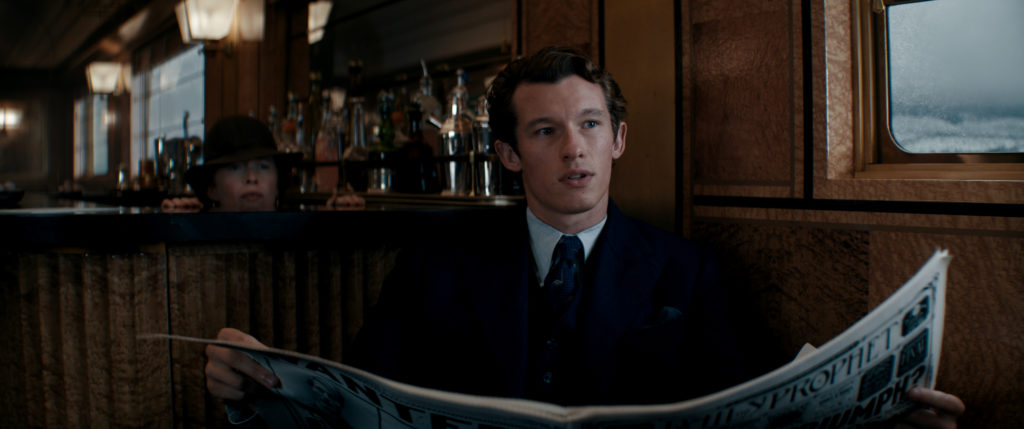
Panavision alchemy
The first Fantastic Beasts movie had shifted from film (on which all the Potters were shot) to the ARRI Alexa with anamorphic. On Fantastic Beasts: The Crimes of Grindelwald, Philippe Rousselot AFC ASC had moved the franchise into large format, shooting Alexa 65 and spherical. Richmond wanted to retain the large format and return to anamorphic, so he paired Panavision UItra Vistas with the Alexa LF.
“Hugh Whittaker and Charlie Todman at Panavision showed me how the Ultra Vista’s 1.65 squeeze of the 2.40 aspect ratio fitted exactly into the Alexa LF chip. That gave us the large format look with wonderfully imperfect, soft and old looking lenses that I felt was suitable for a period piece.”
In the same vein, discussions about mixing colour and colour densities revolved around referencing an older film look. Richmond found an AGFA film stock to emulate the “cool silvery bottom end with silky velvety blacks and constrained skin tones” and then used the lenses to take the sharpness of the digital LF away.

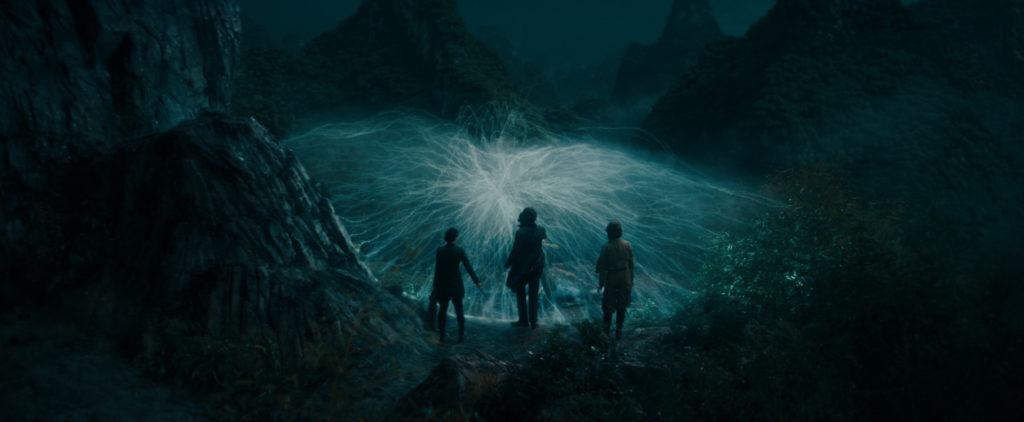
“We get all the beautiful perspective of that large format camera but remove some of it with these huge bits of bent glass with all the aberrations and difficulties that the lenses present,” he says. “The lovely thing about this particular set of lenses is that each has its own characteristics. We took a couple to have them tweaked at Panavision in the US (where lens guru Dan Sasaki applied his alchemy). We wanted one lens to have a closer focus and one of the wide lenses had a really heavy barrelling look to it, so we wanted the edges straightened.
“Panavision were amazing and helped us select a set out of these handmade lenses built of glass from donor lenses. They have the classic Panavision patina to them but each lens is individual so you could use a specific lens to lend a specific emotional feel.”
Richmond shot the lion’s share on 40mm, 50mm, and 75mm and mostly with one camera which he operated. “The LF anamorphic system demands that you take the camera to the action,” he says. “You can’t sit on the side lines and observe and endlessly lens up to shoot the scene. You have to take the camera in, so it becomes part of the environment where you interact with actors.

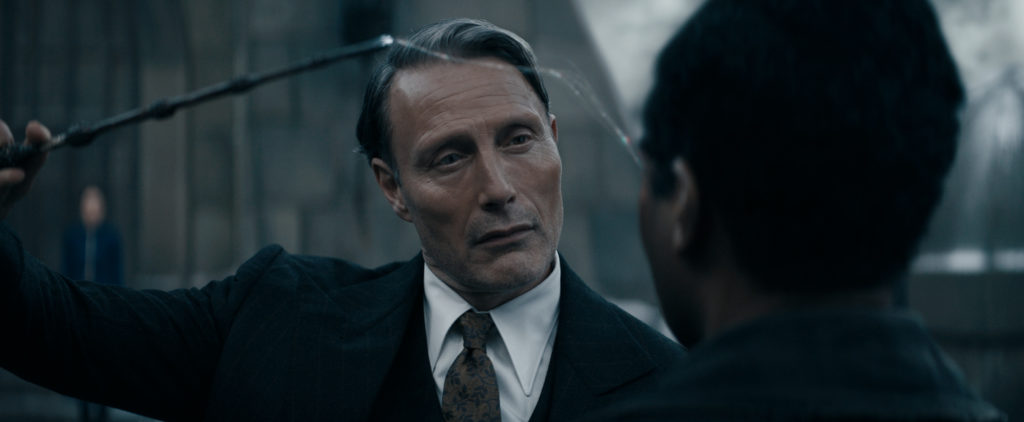
“If I want a close-up with a beautiful background, I’ll put a 75mm on and go in and participate rather than use a telephoto that blurs backgrounds. So much of the appeal of Fantastic Beasts is the world it creates and so we want the audience to experience that. We want to reference those backgrounds, whereas in more contemporary environments you might blur the background.”
Richmond, who has operated throughout his career, says, “it’s not just the control of the camera but keeping that one-to-one relationship with the director I value. Successful filmmaking is all about relationships.”
He did though rely on Chris Bain (B cam/Steadicam) on Dumbledore and the sterling work of focus puller David Cozens.
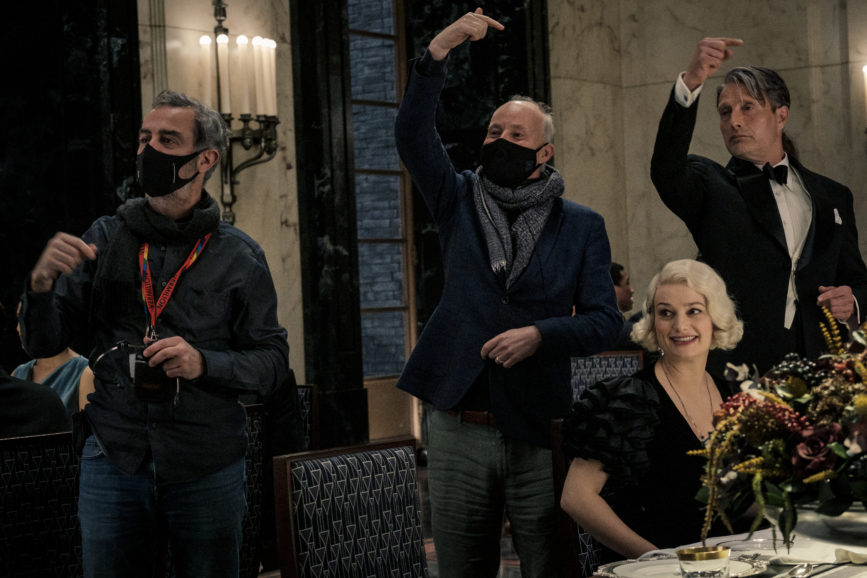
Shooting at Leavesden
Like many productions planned to shoot in early 2020, the pandemic prompted a rethink. In the event, location work was confined to just a single day (in woods near Windsor) with the rest of the action on Leavesden stages when photography recommenced in August 2020.
That worked in so far as Beasts, like Potter, is designed for huge set builds. These were not half built sets against blue screen but enormous extensions that included a bamboo forest (depicting a scene set in China) built on a 15-degree relief on the backlot, Berlin, and an enormous multi-level set for Bhutan.
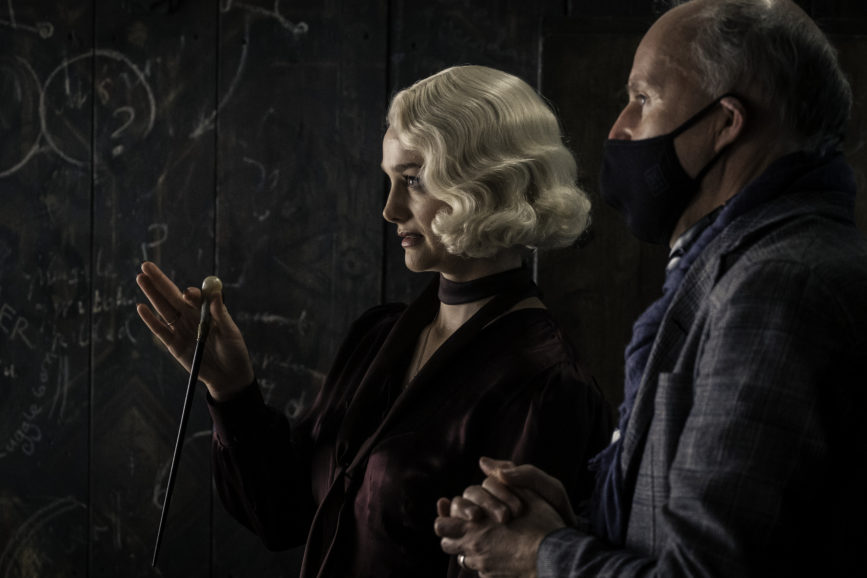
“With the lighting I wanted to try as best as possible to give the impression of single source lighting. I didn’t want to backlight anything if possible but to have separation with the set by having light on the set rather than on the actors and importantly not to fill too much but to keep a nice contrast, to use shadow and darkness as much as possible. For me, one of the characteristic looks of the Potter films and Beasts series is that their embrace of the darkness was lovely to look at.”
In this endeavour he was aided by regular gaffer Stephen Mathie who he first met on Kingsman: The Secret Service (where Mathie was desk operator) before inviting him to gaffer on Tomb Raider, Rocketman, and Argyll.
“Steve’s got a really amazing eye. He’s spent years working with some of the best in the business and I know how fantastic it is to have someone on set with a keen eye like his. More than that, he is also a dear friend and someone who is a joy to be around.”
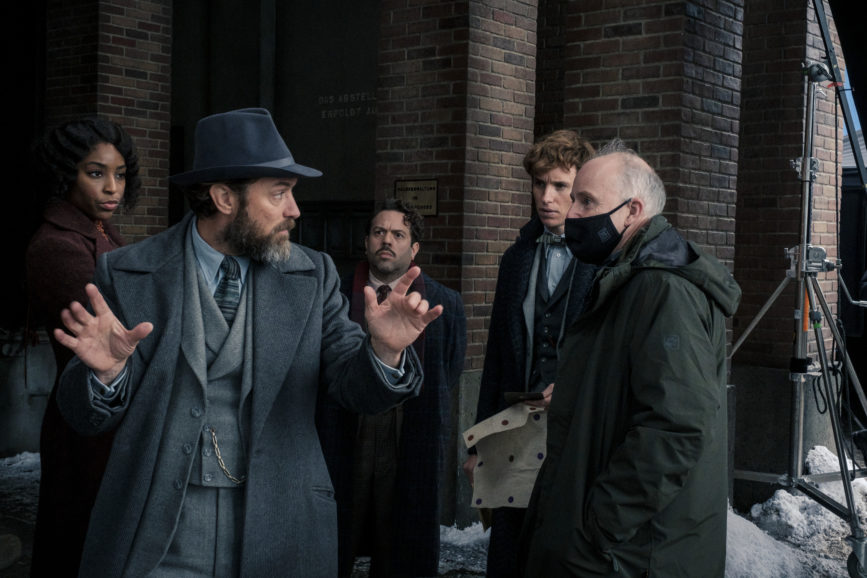
Magic in the VFX
The detail and scale of the sets notwithstanding, this is a film with copious visual effects – notably the CG creations of the beasts themselves. This effort was led by VFX supervisor Christian Manz.
“He is superb technician, incredibly artistic, with great ideas,” Richmond says. “For VFX to be really successful the photography and the effects need to meet in the middle. As a cinematographer I won’t light things that won’t work in VFX, there’s just no point going there. So, the approach here was to keep it soft and single source, not having light that shouldn’t be there.”
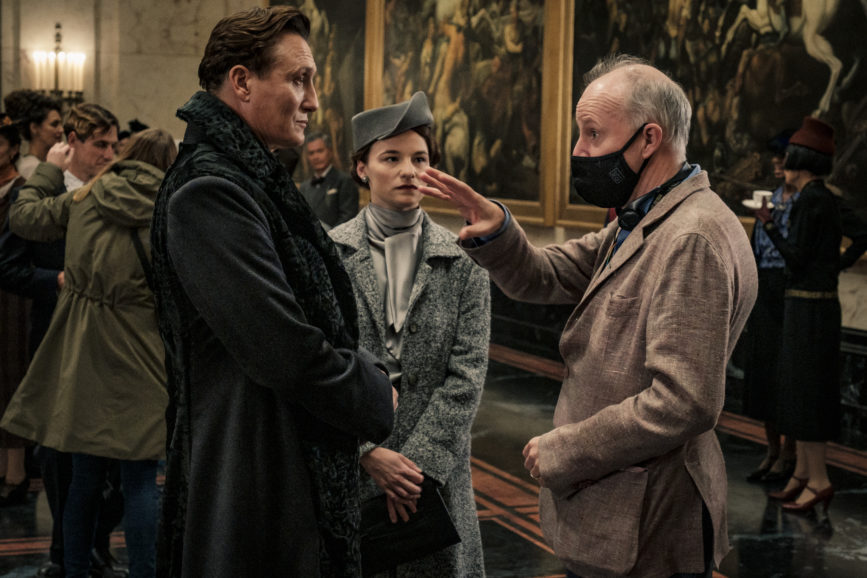
Richmond makes the following observations about working with large format digital cinematography and VFX. “If your foreground is too sharp, you can have shots with absolutely no CG in them and still have the appearance that you’re shooting a character against comp’d green screen. So, I always try to shoot with a shallow depth of field. For example, when you’re with an actor, I’ll make their shoulders or back of their ears out of focus to allow them to sit into the background better.
“Another general point about digital photography for me is to make sure that the blacks in the photography, the set extensions, and CG characters all exhibit the same quality. The goal should be that you don’t where the sets begin and end. When working with people like Christian and Framestore who are the best in the business, this is easy.”
Aerial plates due to be shot in Portugal, China, and Brazil were curtailed (due to COVID) to filming sequences in the Scottish Highlands (for Hogwarts) and the Swiss Alps. Aerial DP and drone camera operator Jeremy Braben Associate BSC and his team from Helicopter Film Services filmed with Alexa Mini LF and Fujinon Premista Spherical 28-100mm zoom for ease of shooting with an anamorphic tweak applied in post.
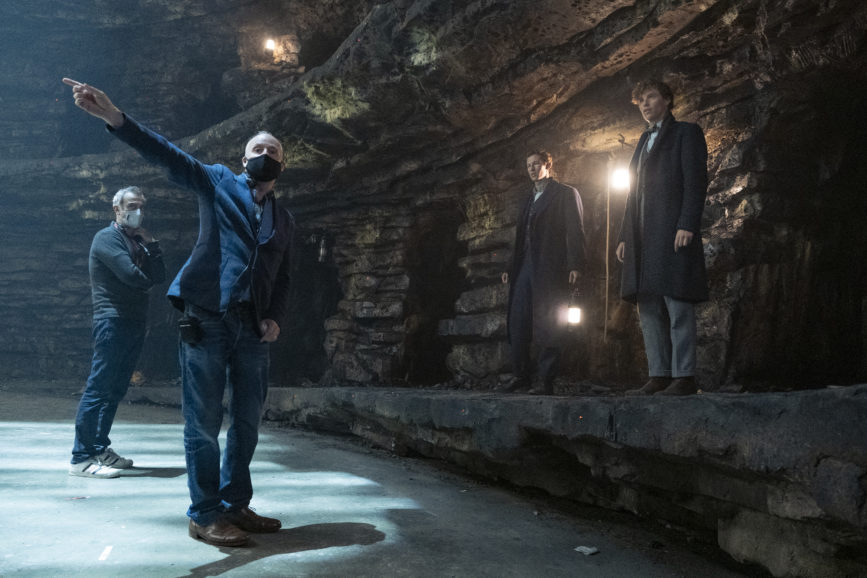
Ensuring consistency
All the material was brought into Resolve for the dailies grade. Social distancing made it tricky for Joshua Callis-Smith, CTO and colourist, to work close to Richmond. To overcome this, he patched a feed out of DaVinci Resolve to the DP on a separate monitor, but since this was the tenth project they had done together, communication was relatively easy.
A Blackmagic Smart Videohub allowed Callis-Smith to switch between his live image and the dailies grade as required. Other tools such as colour trace, gallery/look management, and DRX sidecars provided a means of organising grades and moving colour information between set, dailies and post, ensuring consistency throughout.
Richmond developed the show LUT with Rob Pizzey at Goldcrest in continuation of a partnership that began on A Thousand Kisses Deep in 2011. Dumbledore was graded, conformed, and finished in Resolve.
“I tend to carry a master LUT that has the master look and a second LUT which is lighter in the blacks in circumstances when you’re in trouble with the light! Goldcrest have a way of separating densities from the colour so you can make LUTs heavier or lighter without adjusting the colour curve which was always a problem with LUTs – you’d change the contrast or density and the colour would shift.
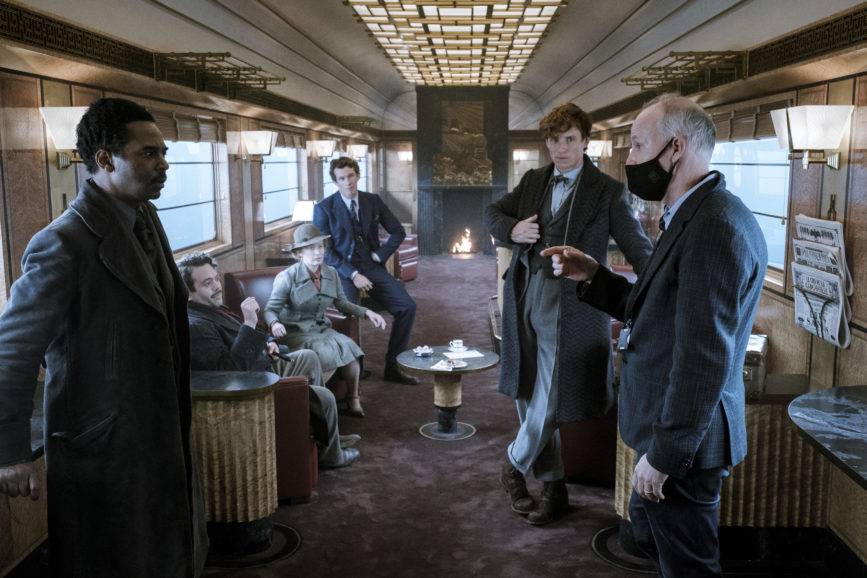
“The post process with Rob is one we use on every project now and that is we make a Colour Bible. We find a time in post when they are still editing to gather about 250 stills, wides, and CUs from scenes across the film, and spend a couple of days doing a fine grade on all of those. One of the main reasons I do this is because it’s so difficult to ensure you are going to be in the DI suite at the specific time of the grade just before release. It’s a system that protects the look that I want to give the movie and it also allows Rob to get a look on the entire movie without me sitting in there and meddling on a shot-by-shot basis which just costs time.
“With the Colour Bible we get the whole look down, including all the windows with everything tracked, allowing me to work quickly with Rob to tweak and finesse it. That’s when grading is really fun. It streamlines the process of grading and just makes it easier and more enjoyable.
“Not only is Rob a master colourist, he’s also a person I like to spend time with. As you spend more time in this industry you just want to be around people whose company you enjoy. Rob is a friend, and we speak a lot. Chris and David are also people whom you develop a relationship with and end up becoming friends with which is a wonderful place to be.”

